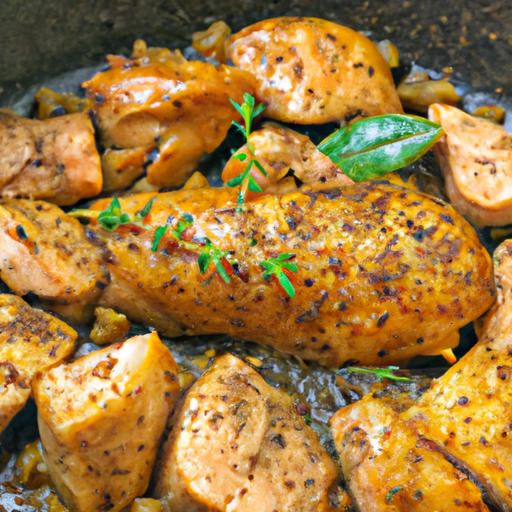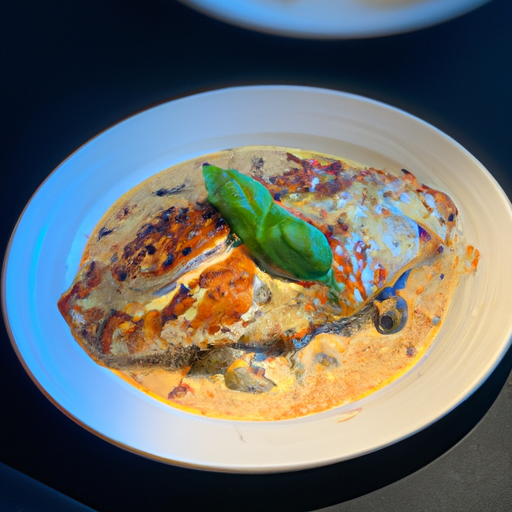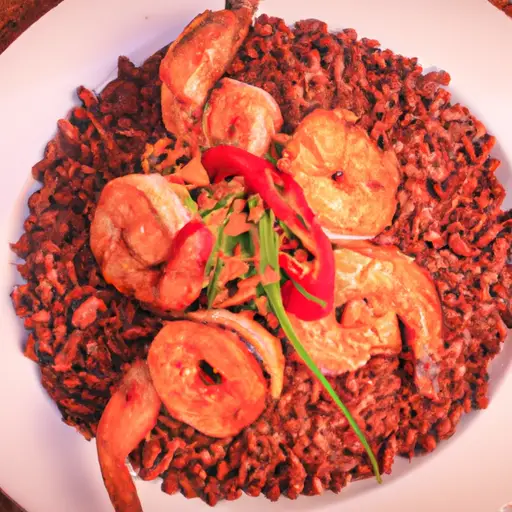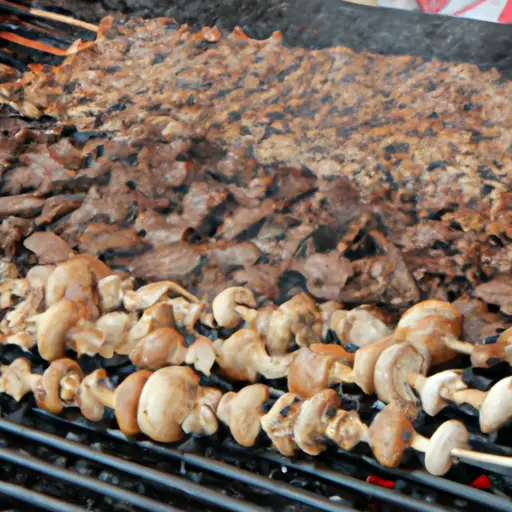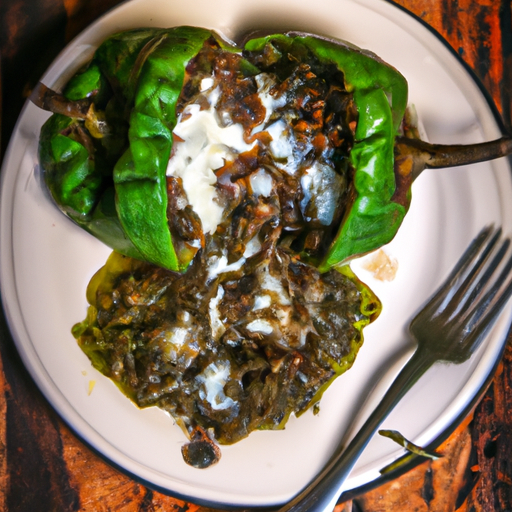Sauteed Chicken With Sage Browned Butter
This introduction provides an objective and impersonal overview of preparing sautéed chicken with sage browned butter.
The technique involves cooking the chicken in a skillet, accompanied by the use of sage-infused browned butter.
By following these guidelines, readers can learn about an enticing recipe that combines sautéing techniques with flavorful ingredients to create a delectable chicken dish.
Chicken History
The history of chicken dates back to ancient times when it was first domesticated and used for its eggs and meat. It is believed that the red junglefowl native to Southeast Asia is the wild ancestor of modern-day chickens. Over time, humans began selectively breeding these birds for specific traits such as size, meat quality, and egg production, allowing chickens to spread throughout the world due to their adaptability and ability to thrive in diverse environments.
In ancient civilizations like Egypt, Greece, and Rome, chickens were highly valued for their eggs and meat. Furthermore, they held symbolic meaning in some cultures. For instance, Chinese folklore associated the rooster with courage and regarded it as a symbol of good luck.
During the Middle Ages and Age of Exploration, the expansion of trade routes facilitated the spread of chickens to various continents. European explorers brought them to the Americas during their voyages in the 15th century.
Nowadays, chicken is one of the most widely consumed meats worldwide due to its affordability and various uses in cuisine. It is now a staple ingredient in countless recipes and is featured in cuisines around the globe.
Ingredients for Sauteed Chicken With Sage Browned Butter
- 4 boneless, skinless chicken breasts
- 2 tablespoons olive oil
- 2 tablespoons butter
- 2 cloves garlic, minced
- 2 tablespoons fresh sage leaves, finely chopped
- Salt and freshly ground black pepper to taste
- Juice of 1/2 lemon
Instructions
To prepare this dish, start by heating a skillet over medium heat. Once the skillet is hot, add the olive oil and let it heat for a minute. Carefully place the chicken breasts in the skillet, taking care not to overcrowd them. Cook each side for around 4-5 minutes or until it is golden brown and cooked through. Remove the chicken from the skillet and set aside.
In the same skillet, melt the butter over medium-low heat. Add the sage leaves and cook until they become crispy and fragrant, approximately 2-3 minutes. Take care not to burn them.
Return the chicken to the skillet with the browned butter and sage leaves. Spoon some of the infused butter over each piece of chicken before serving.
Cooking Tips: Seasoning and Temperature Control
A crucial part of cooking is mastering the art of seasoning and temperature control. Seasoning can bring out the flavors of a dish, providing a delicious complexity. It is essential to use the correct quantities of salt, herbs, and spices to balance the flavors without overpowering them. Temperature control is just as important, as it affects both food safety and taste. Cooking at too high a temperature may result in burnt or dried out food, while cooking at too low a temperature may lead to undercooked or raw dishes. To achieve the perfect balance, attention to detail and practice is key.
To help you hone your skills, here are some tips to consider:
| Seasoning Tips | Temperature Control Tips |
|---|---|
| Taste as you go | Preheat your pan |
| Use quality spices | Adjust heat as needed |
| Experiment with herbs | Monitor internal temperature |
| Balance sweet, salty, sour | Rest meat before slicing |
Final Thoughts
Considering all the aspects discussed, it is clear that mastering seasoning and temperature control is vital for making delicious and well-balanced dishes.
Seasoning plays an essential role in enhancing the flavor of food by adding complexity and depth to every bite. It requires a careful balance of salt, herbs, spices, and other flavorings to create a harmonious blend of tastes.
Temperature control, on the other hand, guarantees that ingredients are cooked evenly and maintain their desired texture. This can be accomplished through proper heat management and using cooking techniques such as searing or simmering.
By understanding how seasoning and temperature interact with ingredients, chefs can craft dishes that are not only visually pleasing but also full of scrumptious flavors.
Ultimately, these capabilities allow for more inventive cooking and enable cooks to take their culinary creations to the next level.
Frequently Asked Questions
How Long Does It Take to Sauté Chicken With Sage Browned Butter?
The cooking time for sautéed chicken with sage browned butter may vary depending on factors such as the thickness of the chicken, heat intensity, and desired level of doneness. It is recommended to cook until the internal temperature reaches 165°F for safe consumption.
Can I Use Dried Sage Instead of Fresh Sage for This Recipe?
Using dried sage instead of fresh sage in the recipe for Sauteed Chicken With Sage Browned Butter may affect the flavor and aroma of the dish. Fresh sage is generally preferred for its stronger and more vibrant taste, but dried sage can be used as a substitute if necessary.
Is It Necessary to Pound the Chicken Breasts Before Sautéing Them?
Pounding chicken breasts before sautéing is not necessary but can offer benefits. Pounding helps to even out the thickness of the meat, promoting more uniform cooking. It also tenderizes the meat by breaking down its fibers, resulting in a more tender and juicy texture.
Can I Substitute Butter With a Different Type of Fat for a Healthier Option?
Substituting butter with a different type of fat for a healthier option in sautéed chicken can be possible. However, the choice of alternative fat depends on individual preferences and dietary needs, considering factors such as taste, nutritional profile, and cooking properties.
What Are Some Suitable Side Dishes to Serve With Sautéed Chicken With Sage Browned Butter?
Some suitable side dishes to serve with sautéed chicken with sage browned butter may include roasted vegetables, such as carrots or Brussels sprouts, a green salad with a light vinaigrette dressing, or creamy mashed potatoes.
